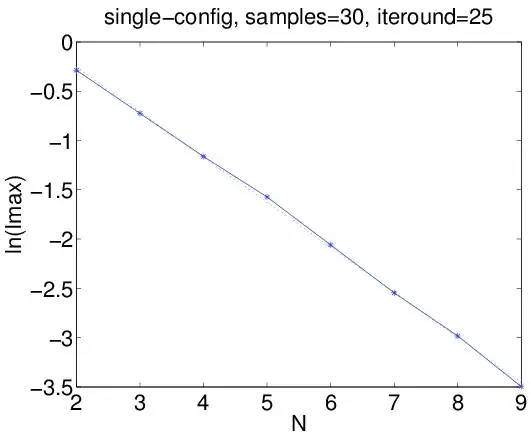Consider the $1/3$-Laughlin wave function
$$ \Psi \propto \exp \left(-\sum_i |z_i|^2 \right) \prod_{1\leq i<j\leq N} (z_i-z_j)^3 . $$
It cannot be written in the form of a Slater determinant, which means, the electrons are entangled somehow. I tried to quantity the entanglement between them using the geometric approach, i.e., finding its best Slater approximation (maximizing the overlap $\langle \Psi|\Psi_{slater}\rangle $) and using the maximum value $I_{max}$ of the overlap as a measure. It turns out that there is almost a linear relationship between $N$ and $\ln(I_{max})$:

But does this mean anything? Why is there no crossover regime at the $N\rightarrow 0 $ limit?